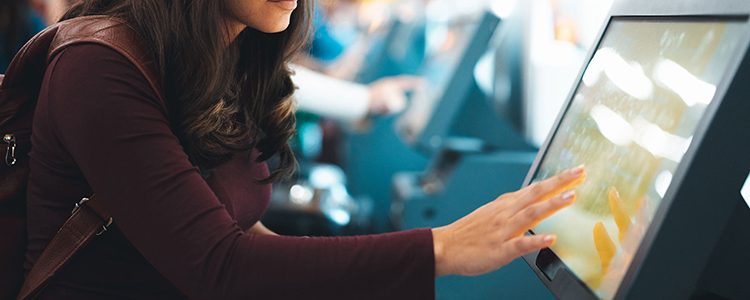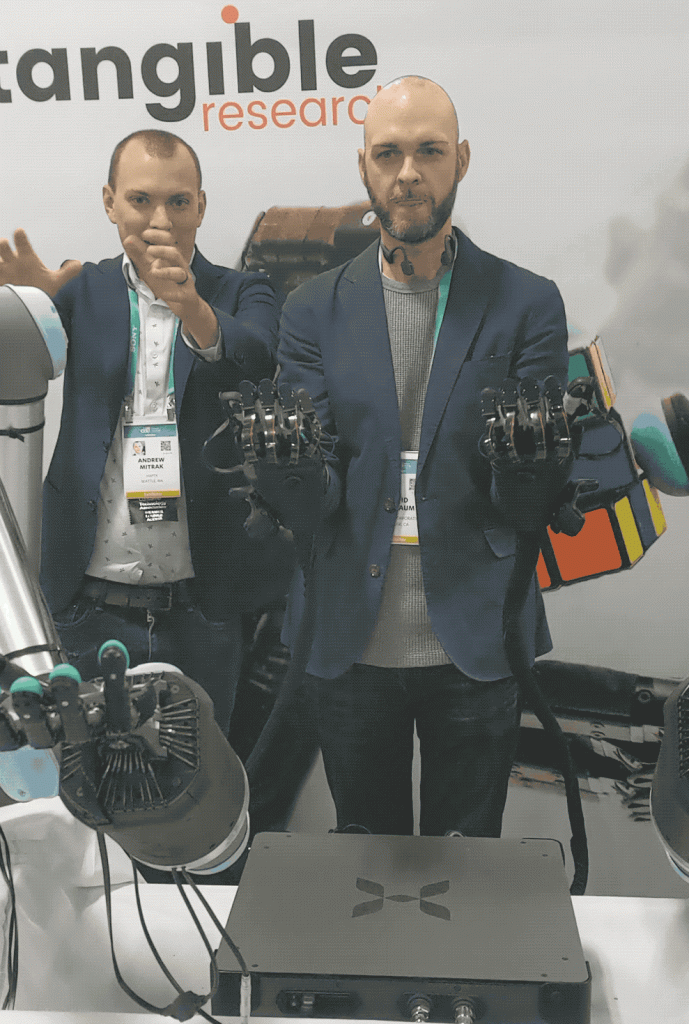by David Birnbaum, Head of Design Strategy and Outreach

The new decade started off with a bang as companies showcased their latest technologies and offerings at CES 2020. Haptics at CES was especially prominent at this year’s show, with many new solutions, devices, and use cases, setting the stage for a vibrant, growing haptic ecosystem in the next decade and beyond. In fact, according to the Wall Street Journal’s CES takeaways, two of “The next five things that will make your phone work better” have to do with haptics.
The new crop of haptics to watch in the coming years can be divided into three categories:
1. HAPTIC SURFACES will give rise to better product design
Get ready to say goodbye to your buttons. In this decade, we expect that people who design cars, mobile devices, and IoT appliances will increasingly choose to use touch surfaces with haptic feedback instead of physical buttons. Besides being an advanced design solution, haptic surface technology is increasingly price competitive.
For consumers, there is a litany of benefits to using products with haptic surfaces instead of buttons: devices can be sleeker, less distracting, easier to clean, more durable, and more easily updated. With advanced haptics, most people won’t miss their old mechanical buttons, because flat touch surfaces and screens will feel tactile.
We showcased an example of this at CES with our partner TDK in the form of a large automotive touchscreen that could render HD haptics with a single actuator. It is challenging to move the mass of a large surface to create crisp, clear haptic clicks. Nevertheless, we were able to create realistic buttons, dials, switches, and textures, that felt and worked like the real things – all of which bodes well for the future of large haptic surfaces.
Other companies presented different approaches to haptic surfaces at CES. Hap2U made a splash with a phone that could render textures on its touchscreen. Tanvas presented their own solution for textured touchscreens using a different underlying technology, and even showed off an e-commerce use case where shoppers might one day be able to feel clothing products online before purchasing them.
The 20s may turn out to be the decade that we say goodbye to physical buttons, as well as flat, featureless touch surfaces. In their place, we will see the proliferation of rich, tactile user interfaces made possible with advanced haptic surfaces.
2. HAPTIC WELLNESS will improve people’s lives
There’s a new category of haptic devices that aims to help people feel and live better. Haptic devices focused on wellness will be part of a new wave of wearable devices. The discussion at CES focused on the three generations of wearables previously presented by Colin Milner at the Stanford Center on Longevity. In past generations of wearable technology, Wearables 1.0 monitored user’s actions, and Wearables 2.0 added smart tracking and AI to help people interpret their data. In the 2020s, Wearables 3.0 will take that feedback and personalize it, making it immediately actionable with real-time haptics. This will tighten the feedback loop between people’s actions and their data, leading to faster behavioral change and better results.
For example, the Apollo Neuro presented a wearable device that can play haptic patterns tuned to reduce stress. Doppel showed their wearable device that uses a different haptic approach to help you feel calm and focused by imitating your heartbeat. Circular presented a haptic smart ring that tracks a variety of biometrics and can wake you up with haptic vibrations at an optimal time to avoid sleep inertia.
The key to success for haptic wellness will be to successfully capture biometric data, derive its meaning within the user’s context, and present that meaning privately and personally through rich, well-timed haptic effects. Look for companies that combine the power of AI and advanced haptics to be the leaders in the Wearables 3.0 era.

3. TELETOUCH will remake the internet
If you have a newer phone, you may have recently seen a “5G” icon appear in the status bar. 5G is the next generation wireless network that promises significant improvements to bandwidth, device density, and latency. While your phone might be 5G ready, the network is still in very early stages of deployment. But when it is ready, it may usher in a new type of internet that lets you virtually “reach through” a device to move a distant object and feel haptic feedback in real time.
For a glimpse of the potential, look no further than the teams competing for the ANA Avatar XPrize. Seventy-seven teams have qualified to compete for the $10 million pot, with winners to be announced in 2022. Here’s what they’re trying to do:
The winning team will integrate multiple emerging technologies to develop a physical, non-autonomous Avatar System with which an operator can see, hear, and interact within a remote environment in a manner that feels as if they are truly there.
One example of how this could look is the Tactile Telerobot, created by the Converge Robotics Group. This group of bright lights in the haptics industry, including HaptX, Shadow Robotics, and Tangible Research, partnered with ANA to develop foundational avatar technology. I had the privilege of trying their latest demo at CES and came away impressed with how easy it was to use.
Conclusion
It is an exciting time to get involved with haptic technology. At Immersion, we are privileged to have deep roots in this space. We’re excited to work with our partners in the ecosystem to bring great haptic user experiences to consumers. We specialize in cost-effective implementations and refined haptic design made possible by our deep understanding of the human sense of touch and the technologies built to engage it. Here’s to the twenties – a decade with haptics on the rise.

